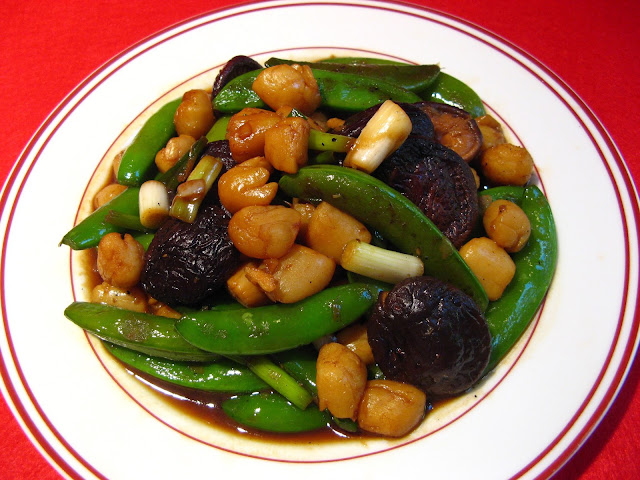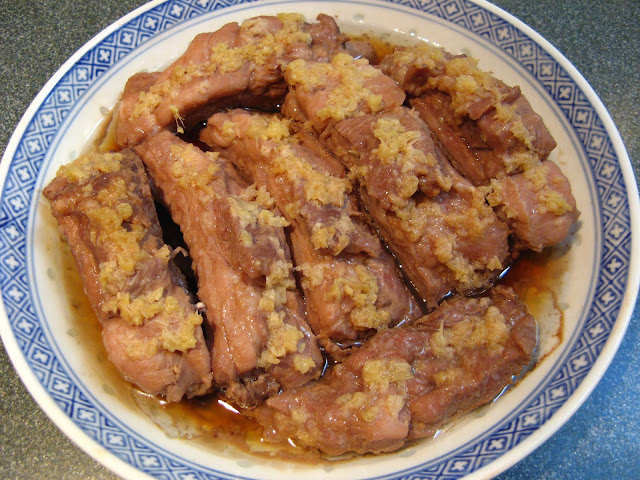This recipe was updated on 12 Jul 2015. Some instructions
and ingredient quantities were changed.
Fish fillets in hot bean sauce is a classic Chinese dish and
using asparagus is a Western addition to the dish, with Shiitake mushrooms
adding another flavor. I used coin mushrooms in this dish, which are small,
coin-sized Shiitake mushrooms – the Cantonese translation is “Gold Coin
Mushroom”. If coin mushrooms are not available at your local Asian market, just
use regular Shiitake mushrooms cut into pieces.
The root end of the asparagus has a tough skin. The usual
advice is to take the root end of the asparagus in one hand and the tip end
with the other, snap the asparagus (it breaks at the natural tough-tender skin
boundary), and discard the root end and use the tip end. However that results
in a lot of waste (in my opinion) since the center of the root end is still
tender and edible, it’s just the skin that’s tough. So I’ve found that if you
use a vegetable peeler, you can remove the tough outer skin and use the entire asparagus
stalk. It takes some practice to just remove the asparagus’ tough skin. My
first efforts using a vegetable peeler resulted in breaking the stalks and/or
peeling too much of the asparagus at the root end, so I had some odd looking asparagus
pieces. I’ve tried using a knife to remove the skin, but I’ve found that with
practice the vegetable peeler removes less of the asparagus stalk root end’s tender
center.
Enjoy!






